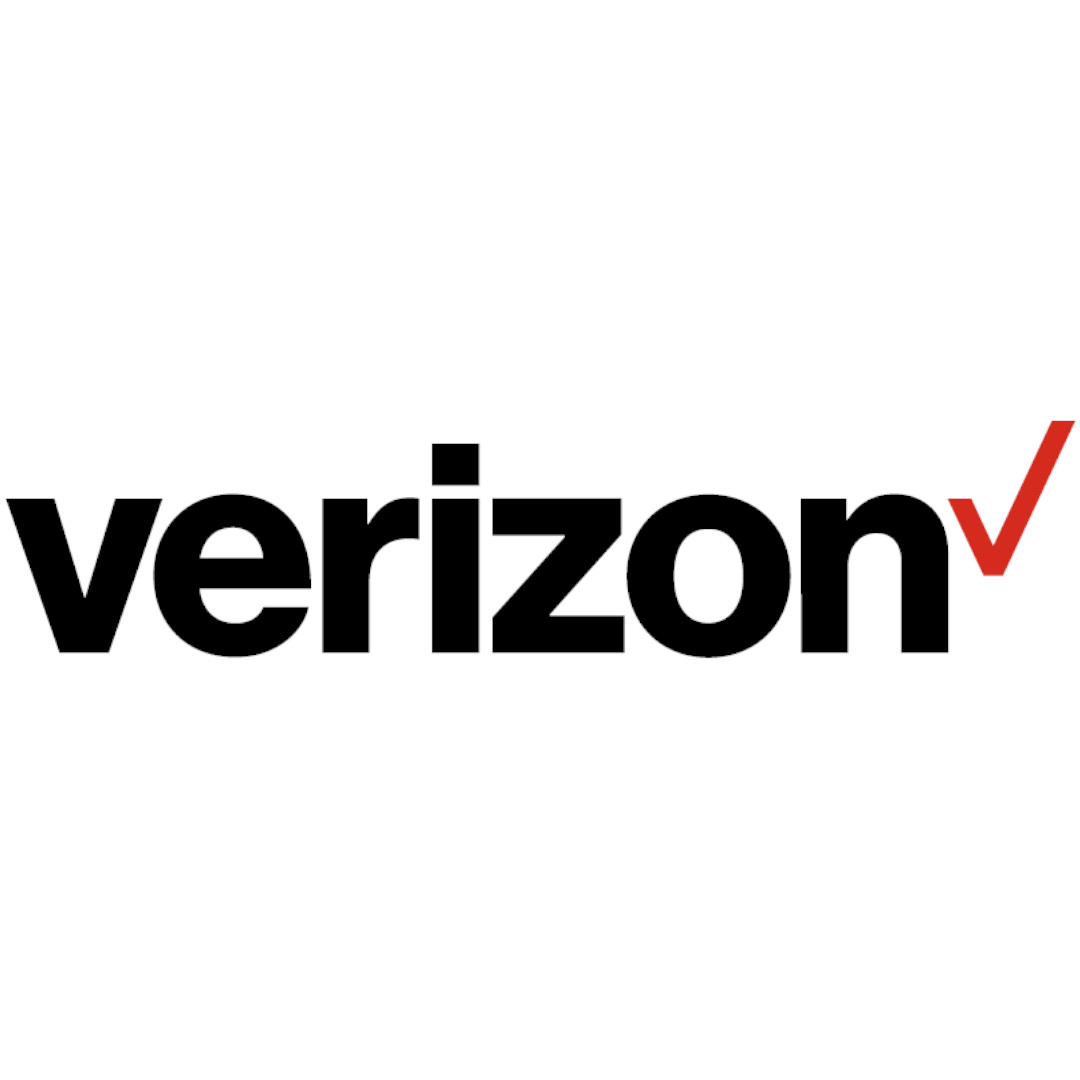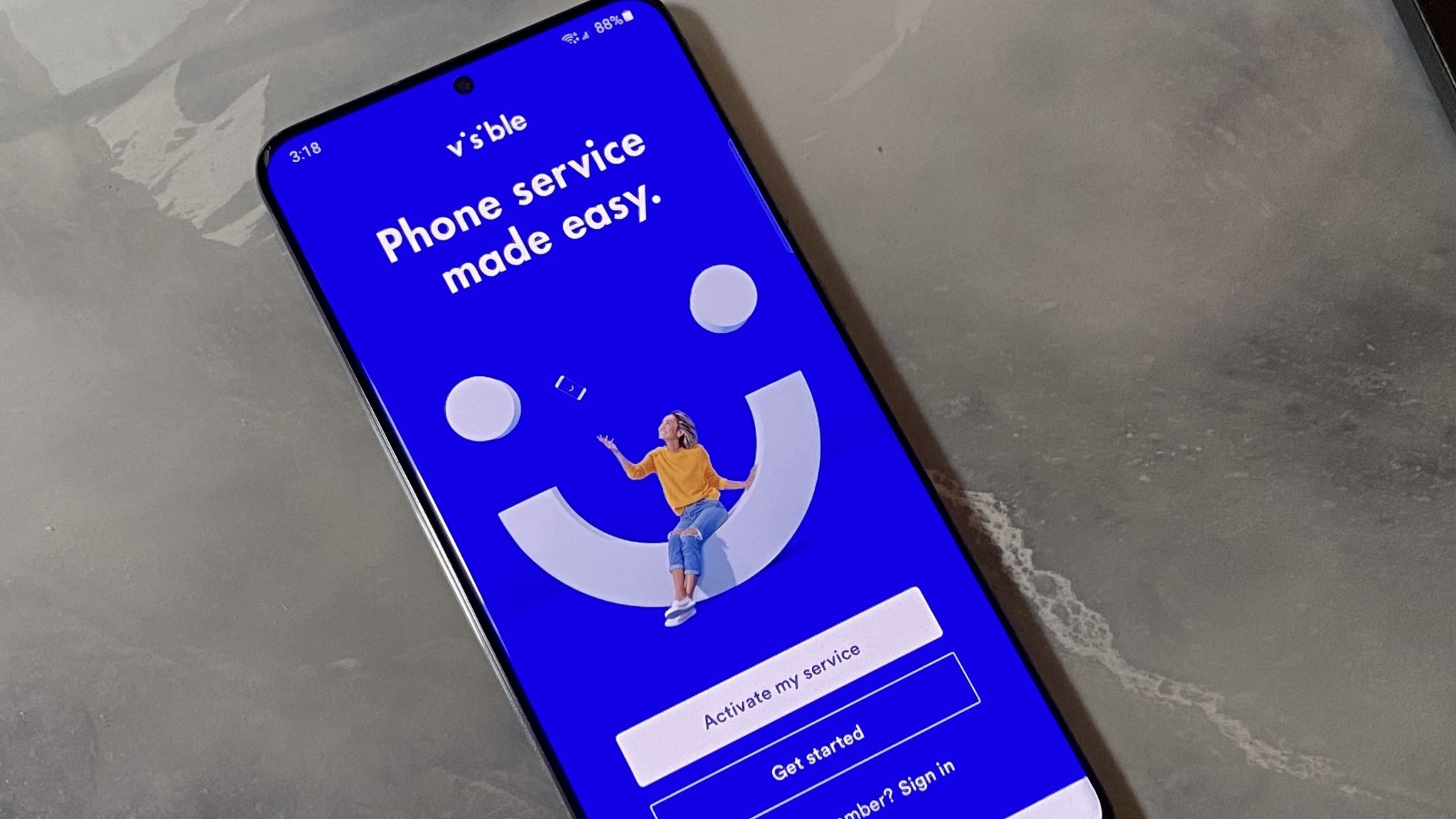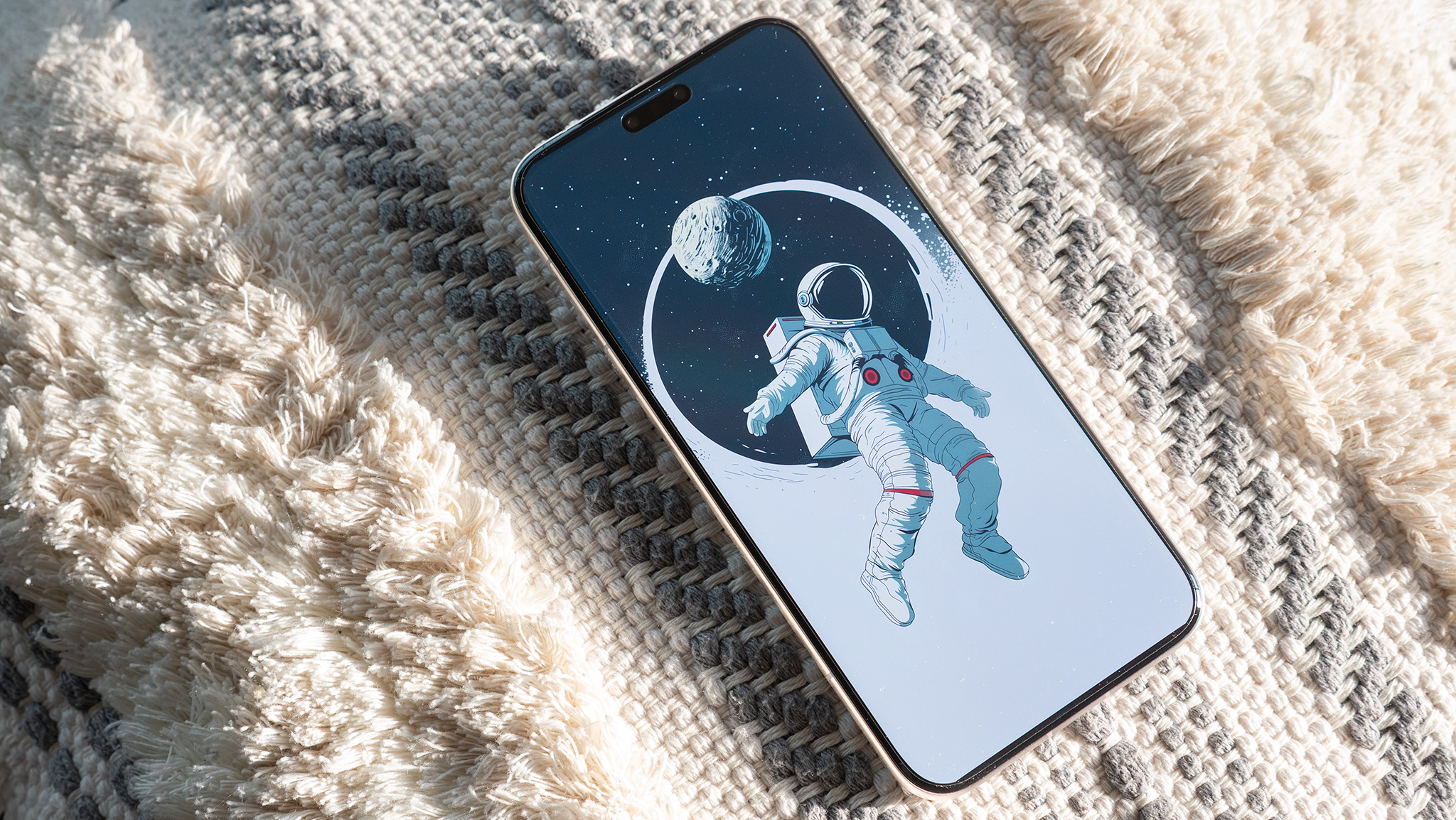Visible vs. Verizon: Which carrier should you get?
Visible remains unmatched when it comes to value for money.

Two unlimited options
Visible is an excellent choice for most users, thanks to its strong network coverage and low-cost unlimited data. You can choose from two plans that both offer unlimited data, with the higher plan also including access to 5G Ultra-Wideband network.
Pros
- No contract
- Unlimited talk and text on 5G and LTE networks
- Unlimited hotspot (5/10Mbps)
- Premium data available
- All taxes and fees included
Cons
- Fewer supported phones
- No 3G or roaming access

More is more
Verizon Wireless continues to raise the bar with one of the best network infrastructure available. Thanks to support for legacy networks, you get great coverage almost everywhere, complete with benefits like bundled streaming services.
Pros
- Better coverage with roaming
- Faster speeds
- Larger phone selection
- Ultra-Wideband 5G with two higher unlimited plans
- Nationwide 5G included with every plan
Cons
- More expensive for one line
- Contract required
Comparing Visible vs. Verizon might seem a little odd, since both carriers are owned by the same parent company, but this is where the similarities (largely) end. Visible is essentially a Mobile Virtual Network Operator (MVNO) that's aimed at users who want the most bang for their buck(s), offering two simple yet feature-laden plans to pick from. Verizon, on the other hand, is the more mainstream wireless service provider targeted at consumers who simply want the best and don't really mind spending a little extra.
Both carriers also bundle their unlimited plans with a wide variety of add-ons. However, even though Visible and Verizon utilize the same network infrastructure, their overall coverage isn't the same. Let's take a detailed look at what these two service providers have to offer, and which one would be a better pick for you.
- Carrier deals: Verizon | AT&T | T-Mobile | Mint Mobile | Visible
Visible vs. Verizon Wireless: Verizon's customers get a higher priority

Since Verizon owns Visible, you'll ultimately be a Verizon customer no matter which of the two carriers you end up with. The difference really comes down to priority.
Verizon's plans usually get higher-priority data, but with Visible's higher-end Visible+ plan, the prepaid carrier can now compete quite well on network quality. Visible still offers a base plan (simple called Visible) with lower-priority data, and while it doesn't directly throttle speeds, you might notice reduced speeds in congested areas. It's a lot like the carrier's old plan that we tested in our Visible review, and is going to be just fine for most users.
Verizon's network will be noticeably better if you move away from densely populated areas. This is due to Verizon customers still having access to the network's legacy 3G towers and LTE roaming network. Verizon smartphones will still connect to 5G or LTE networks if possible, but if there is no native signal available, they will have a fallback option.
Visible uses Verizon's LTE and 5G exclusively, and while the coverage is getting closer to what Verizon's primary customers can access, this network is still a bit smaller. For the majority of users in urban or suburban areas, these differences will be minimal, and for those with 5G smartphones and C-band coverage, they may be unnoticeable. Still, this varies by location so there's a chance Visible's network might not work that well for you.
| Header Cell - Column 0 | Visible | Verizon Wireless |
|---|---|---|
| Network | Verizon: LTE, 5G | Verizon: 3G, LTE, 5G |
| Ultra-Wideband 5G access | Visible Plus | Unlimited Plus and Unlimited Ultimate |
| Multi-line discounts | None | All plans |
| Spam protection | Yes | Yes |
| Taxes and fees | Included | Not Included |
| Video streaming | 480p | 480p/720p/1080p |
| Mobile hotspot data | Yes, shared (Both plans) | Yes, dedicated (Unlimited Plus & Unlimited Ultimate) |
Visible vs. Verizon Wireless: Does Visible match up in coverage?

Visible only uses Verizon's digital network having LTE and 5G coverage. Nationwide 5G is included with both Visible plans, with the faster Ultra-Wideband 5G access only available with the higher Visible+ plan. For most users, either plan should be enough for everything from streaming to general usage. That said, if you need more speeds, the high-speed premium data offered with Visible+ may be a worthwhile upgrade.
Get the latest news from Android Central, your trusted companion in the world of Android
There are a few gaps, and Verizon fills those by either relying on its older 3G network or buying data from other providers for roaming access. Visible doesn't get access to Verizon's roaming partners at all.
The Verizon 5G network is growing quickly, with at least some 5G coverage in most urban areas. Verizon's faster Ultra-Wideband network is much smaller although the carrier only began building it in January 2022. Verizon's C-band coverage is steadily improving as well and is expected to cover more than 250 million users by 2024 and beyond.
It's also worth noting that Visible doesn't include international roaming use (except in Canada, Mexico, Puerto Rico, and U.S. Virgin Islands) with the base plan, but does offer it as a $5/day add-on. This is bundled with Visible+, and so is one day of usage (per month) with unlimited talk, text, and 2GB of data in over 140 countries. If you want more, you can get this functionality as a $10/day add-on with both plans. All these add-ons are offered under the 'Global Pass' service.
Verizon's Unlimited Ultimate plan does bundle international talk, text, and data use in more than 210 countries, including Mexico and Canada. The Unlimited Plus and Unlimited Welcome plans come with Mexico and Canada usage, but if you want the same international usage benefits as the top-tier plan, you can buy a 'TravelPass' as a $10/day (before taxes and fees) add-on.
Visible vs. Verizon Wireless: Visible's prepaid plans
Visible has updated its offerings with two plans, named Visible and Visible+. Starting with Visible, this is a simpler offering with unlimited talk, text, and data access. Data isn't prioritized, and 5G access is limited to the relatively slower nationwide network. Both plans have unlimited mobile hotspot data usage (Visible at 5Mbps, and Visible+ at 10Mbps), spam and robocall protection, as well as Mexico and Canada calling. The cheaper Visible plan costs $25 a month with taxes and fees included.
Visible+ adds 50GB of premium network data which keeps your data speeds as high as possible, even on a crowded tower, for the first 50GB of use per month. You also get access to Ultra-Wideband 5G for faster 5G access, where Verizon has C-band and mmWave coverage. International coverage also gets a boost with unlimited usage in Mexico and Canada. Besides that, you get international calls to over 30 countries and texting to more than 200 countries included. Visible+ costs $45 a month, again, with taxes and fees included.
| Header Cell - Column 0 | Visible | Visible+ |
|---|---|---|
| Data | Unlimited | Unlimited |
| Premium data | None | 50GB |
| Hotspot data | Unlimited (5Mbps) | Unlimited (10Mbps) |
| 5G access | Nationwide | Nationwide and Ultra-Wideband |
| Mexico and Canada | Talk and text | Talk, text, and 2GB roaming data |
| Price | $25 per month ($275 yearly) | $45 per month ($395 yearly) |
| Smartwatch service (Apple Watch only) | Additional $10 per month | Included |
Visible doesn't require autopay for its best rates. Its prices are even better when you consider the fact that taxes and fees are included. It's also worth noting that you can pay in advance for a full year of service and save a lot of cash, no matter which of the two plans you get.
Visible vs. Verizon Wireless: Verizon's postpaid plans
Verizon's plans mainly focus on unlimited data, with only their basic plan still offering a limited 500MB option. If you just need to make calls and texts, the basic plan could work, but at $50 per month, you could save a lot more by going for a prepaid MVNO carrier instead.
Starting with Verizon's cheapest unlimited offering, Unlimited Welcome, you get 5G nationwide access and no data caps. The nationwide 5G, by the way, does not have access to Verizon's fast 5G network, so while your phone will say 5G, speeds will be similar to LTE. Unlimited Welcome offers no hotspot data or other perks either, but it does come with multi-line discounts with up to four extra Unlimited Welcome lines on your account.
The Unlimited Plus and Unlimited Ultimate plans offer full Ultra-Wideband 5G access for faster speeds, as well as 30GB and 60GB of dedicated hotspot data, respectively.
If you love streaming services, there are two pre-configured versions of Ultimate Plus that you can take a look at. One comes with Netflix and ad-supported Max bundled, and the other features a Disney bundle and 100GB of hotspot data. Also, Unlimited Welcome can be had pre-configured with a Walmart+ membership.
Then there's the pre-configured Ultimate Unlimited plan, which is best suited for the users who are invested into Apple's ecosystem. It comes bundled with the Apple One membership that gives you access to many of Apple's digital services.
| Header Cell - Column 0 | Unlimited Welcome | Unlimited Plus | Unlimited Ultimate |
|---|---|---|---|
| Network | Nationwide 5G | 5G Ultra-Wideband | 5G Ultra-Wideband |
| Data | Not available | Unlimited premium | Unlimited premium |
| Mobile Hotspot | Not available | 30GB | 60GB |
| International talk & text from US | Mexico & Canada | Mexico & Canada | Mexico & Canada, and one additional country of user's choice |
| International talk, text, and data (abroad) | Mexico & Canada | Mexico & Canada | More than 210 countries |
| Streaming quality | Up to 480p (SD) | Up to 720p (HD) | Up to 1080p (Full HD) |
| Multi-line savings | Yes | Yes | Yes |
| Price (Single Line) | $65 per month | $80 per month | $90 per month |
While not all of Apple's services are available on Android, some like Apple Music and a web browser version of Apple TV+ are available, so the Unlimited Ultimate plan is not totally worthless on Android either. Plus, if you use a Mac or an iPad, you can get the benefits of Apple One on those devices. You can also share your Apple One plan with up to five others when you bring two or more lines to this plan, which cannot be combined with other plans.
With all three plans, you can get Verizon's Home Internet service at a price of $35 per month.
Visible vs. Verizon Wireless: Which phones work?

Both Visible and Verizon will be more than happy to sell or finance a phone for you. Verizon does have a bigger offering of devices, but Visible's growing collection has something that will work for most people. Naturally, you can buy phones for the full price from either carrier. You can also simply get one of the best Android phones unlocked and bring it to the carrier of your choice for a bit more freedom.
Visible's financing is done through Affirm, while Verizon utilizes 36-month payment plans. It's worth keeping in mind that Verizon offers quite a lot of phone discounts, including buy one get one free promotions that rely on this 36-month structure with monthly credits. This means you could get locked behind a multi-thousand-dollar paywall if you get multiple phones on Verizon's payment plans. It also means that you could get multiple new phones for your family for much lower initial prices than buying them outright.
If you already have a device and you want to know if it will be supported, you'll need to use the BYOD (Bring Your Own Device) compatibility tools. Support on one carrier doesn't necessarily mean your device will work on the other carrier, even though the Verizon network is used for both service providers.
Visible only uses VoLTE for calls, so some older phones, or phones from other carriers won't work even if it has band and VoLTE support. You'll need to check your IMEI before signing up on either, if you bought your phone unlocked or from another carrier.
Most of the newer iPhones and some of the most popular Samsung phones are supported. The Galaxy S24 series is fully supported with 5G on Visible, as is the Pixel 9 line-up.
Visible vs. Verizon Wireless: Which should you get?

If you've confirmed that you have proper coverage on Visible's network, it's your best bargain. Verizon's plans do offer marginally better coverage, but for most users, the savings on Visible will be worth it. You should also remember that Verizon has multi-line discounts if you're bringing over family members. Also keep in mind that Verizon Prepaid might have a plan that's a solid fit as well.
As long as you know you're covered, Visible has two simple unlimited plans that will work well. Performance on the base plan may not match up with Verizon or Visible+, but many people will be perfectly happy with it. The cheap $25/month unlimited plan is easily a contender for the best cell phone plan you can buy. If you've got a phone that's compatible, Visible is definitely worth a shot.
- Carrier deals: Verizon | AT&T | T-Mobile | Mint Mobile | Visible

When Samuel is not writing about networking or 5G at Android Central, he spends most of his time researching computer components and obsessing over what CPU goes into the ultimate Windows 98 computer. It's the Pentium 3.
- Rajat SharmaContributor
- Patrick FarmereCommerce Editor
You must confirm your public display name before commenting
Please logout and then login again, you will then be prompted to enter your display name.
